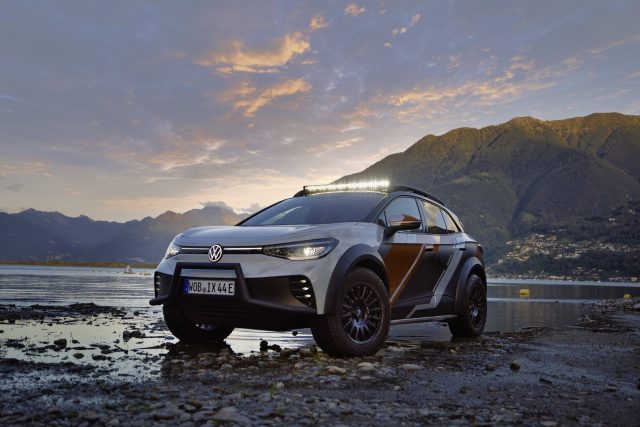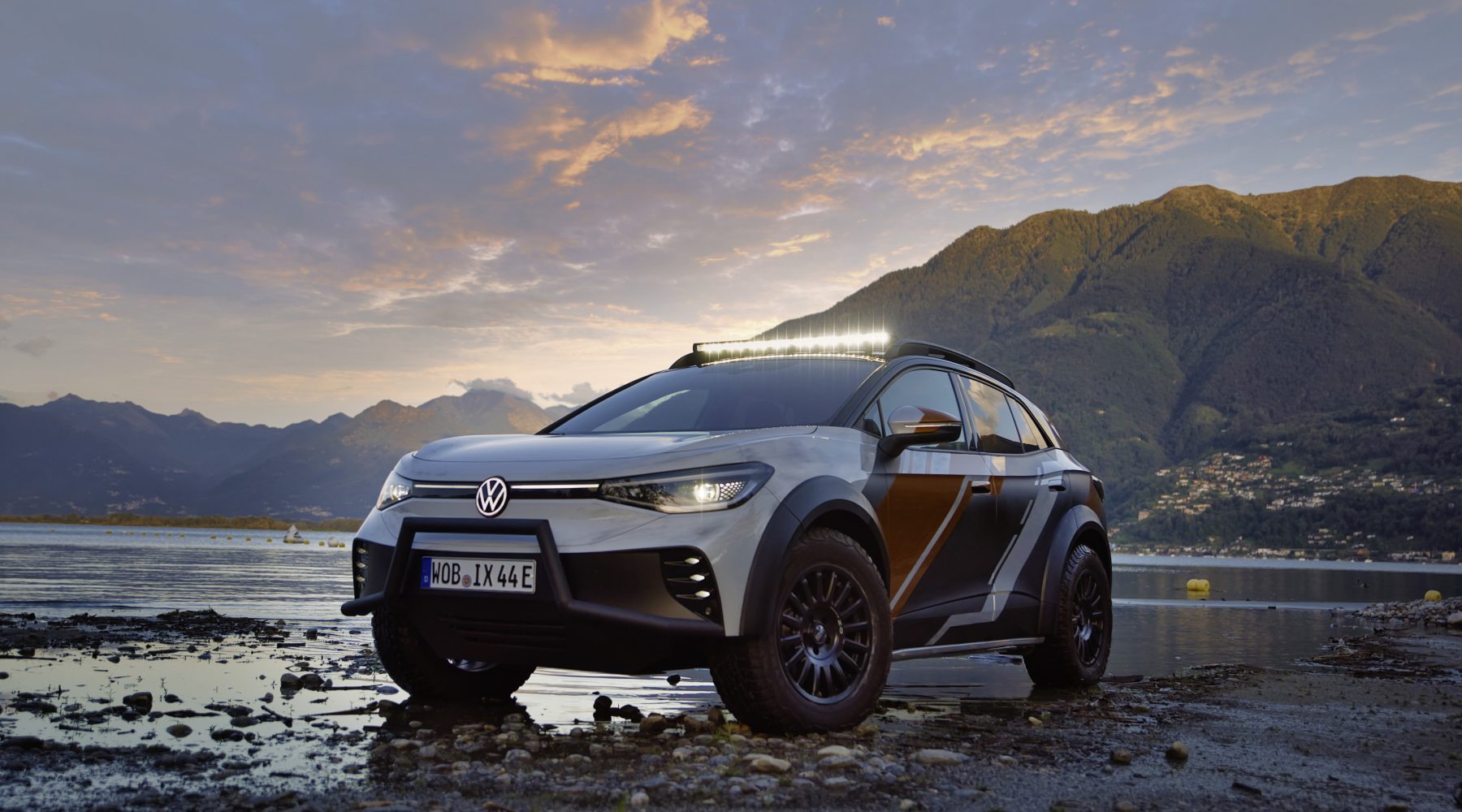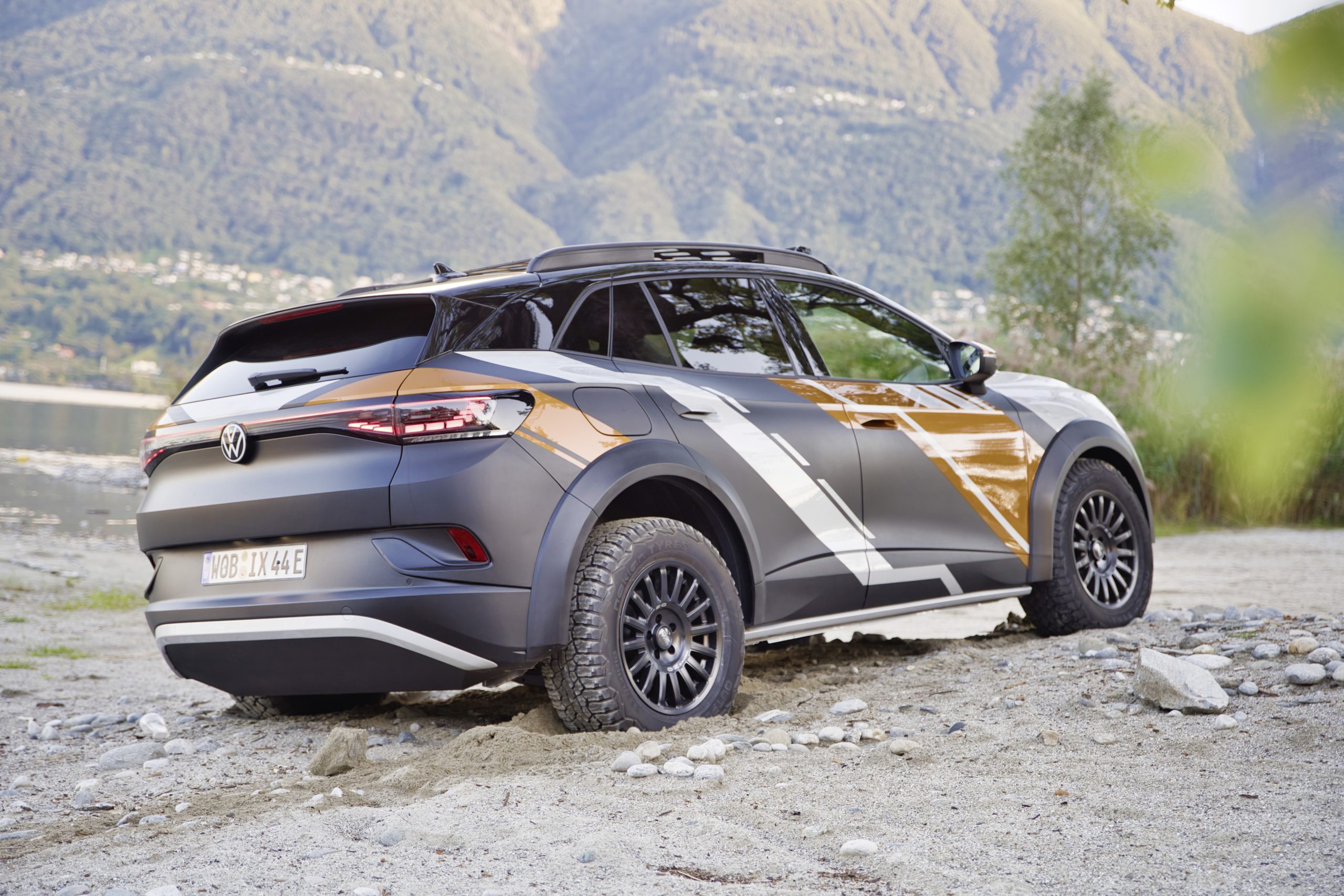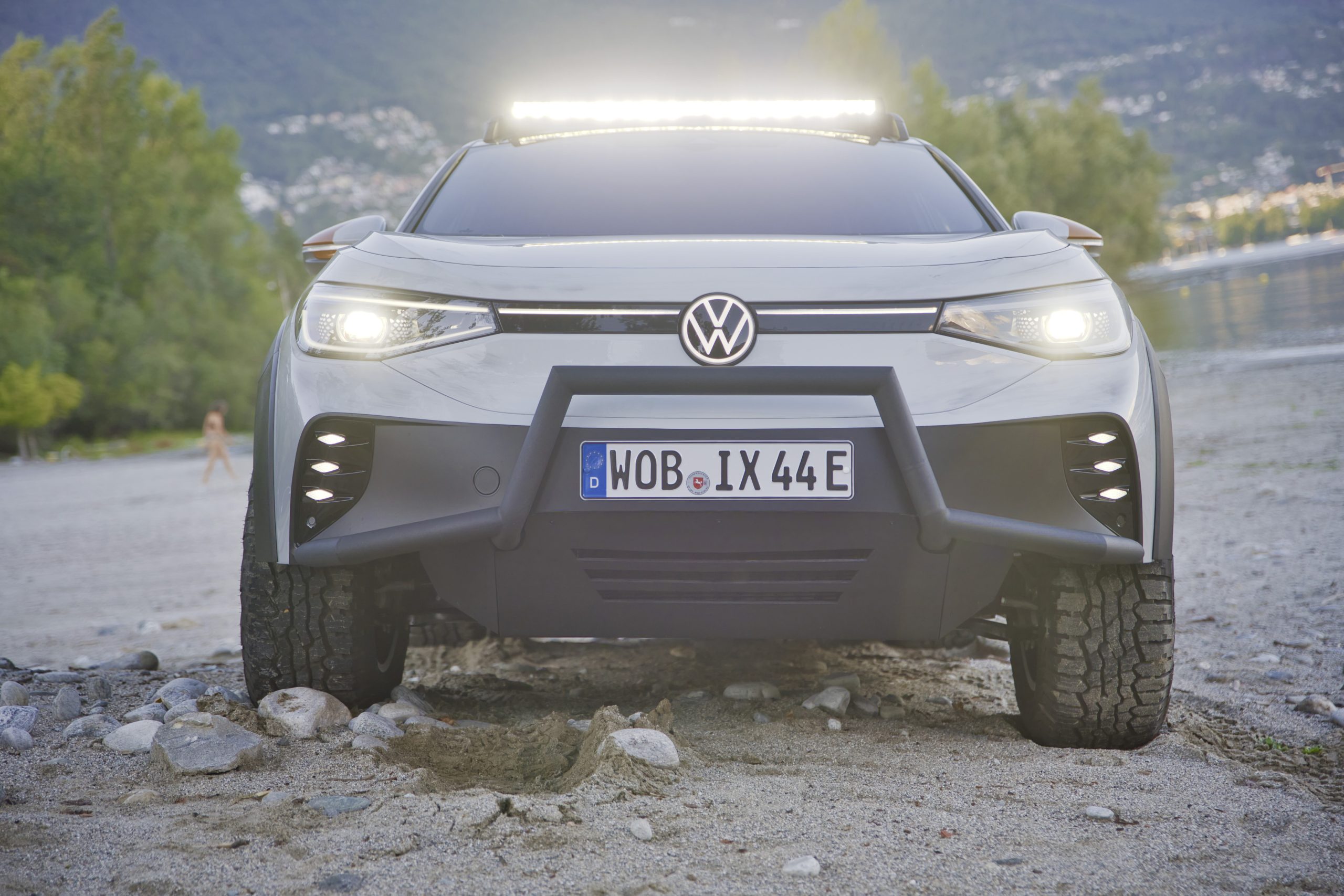
A special kind of automotive event took place in picturesque Tessin at the start of September when the ID. Treffen opened its doors. Organised by private members of the ID. Drivers Club and supported by Volkswagen, fans of sustainable mobility were given exclusive insights into the latest developments. One of the highlights was the ID. XTREME¹⁾ concept car, a fully electric all-wheel drive vehicle based on the ID.4 GTX production model (ID.4 GTX: power consumption in kWh/100 km: combined 17.2-15.8; CO2₂ emissions in g/km: combined 0; efficiency class: A+++).
Powerful and adventurous
When it comes to performance, the Volkswagen developers have certainly put together a sumptuous package: a high-performance drive on the rear axle and software adaptations in the engine control unit ensure an attractive level of performance away from paved roads, too.
“With the ID. XTREME, we are raising electric mobility from Volkswagen to a new performance level.”¹⁾
Silke Bagschik
Head of the MEB Product Line, Volkswagen
Ready for every off-road adventure
Raised rally running gear with 18-inch off-road wheels can be found beneath the wheel arches of the ID. XTREME¹⁾. The concept vehicle is also fitted with a modified crash member with additional front bumper and has a completely closed aluminium underbody. Visually, the concept vehicle has an authentic off-road look, too: the wings are 50 mm wider and the roof carrier is fitted with additional LED lights. Acoustically also, the ID. XTREME¹⁾ has something special to offer: the driving noise was developed together with Volkswagen Design especially for the concept vehicle and is output to the outside via a sound generator in the wheel housing.
“The ID. XTREME is made by enthusiasts at Volkswagen for ID. enthusiasts. Based on the feedback from our community, we will decide how to proceed with the project”, adds Silke Bagschik, Head of the MEB Product Line.¹⁾
¹⁾Near-production concept vehicle. Power consumption and emission values are not yet available.
The specified fuel consumption and emission data have been determined according to the measurement procedures prescribed by law. Since 1st September 2017, certain new vehicles are already being type-approved according to the Worldwide Harmonized Light Vehicles Test Procedure (WLTP), a more realistic test procedure for measuring fuel consumption and CO₂ emissions. Starting on September 1st 2018, the New European Driving Cycle (NEDC) will be replaced by the WLTP in stages. Owing to the more realistic test conditions, the fuel consumption and CO₂ emissions measured according to the WLTP will, in many cases, be higher than those measured according to the NEDC. Therefore, the usage of CO₂ emission values measured according to WLTP for vehicle taxation from 1st September 2018 on can cause changes in this regards as well. For further information on the differences between the WLTP and NEDC, please visit https://www.volkswagen.de/wltp.
We are currently still required by law to state the NEDC figures. In the case of new vehicles which have been type-approved according to the WLTP, the NEDC figures are derived from the WLTP data. It is possible to specify the WLTP figures voluntarily in addition until such time as this is required by law. In cases where the NEDC figures are specified as value ranges, these do not refer to a particular individual vehicle and do not constitute part of the sales offering. They are intended exclusively as a means of comparison between different vehicle types. Additional equipment and accessories (e.g. add-on parts, different tire formats, etc.) may change the relevant vehicle parameters, such as weight, rolling resistance and aerodynamics, and, in conjunction with weather and traffic conditions and individual driving style, may affect fuel consumption, electrical power consumption, CO₂ emissions and the performance figures for the vehicle.
Further information on official fuel consumption figures and the official specific CO₂ emissions of new passenger cars can be found in the “Guide on the fuel economy, CO₂ emissions and power consumption of new passenger car models”, which is available free of charge at all sales dealerships and from DAT Deutsche Automobil Treuhand GmbH, Hellmuth-Hirth-Str. 1, D-73760 Ostfildern, Germany and at www.dat.de.
Status: 22. September 2022
© Volkswagen












